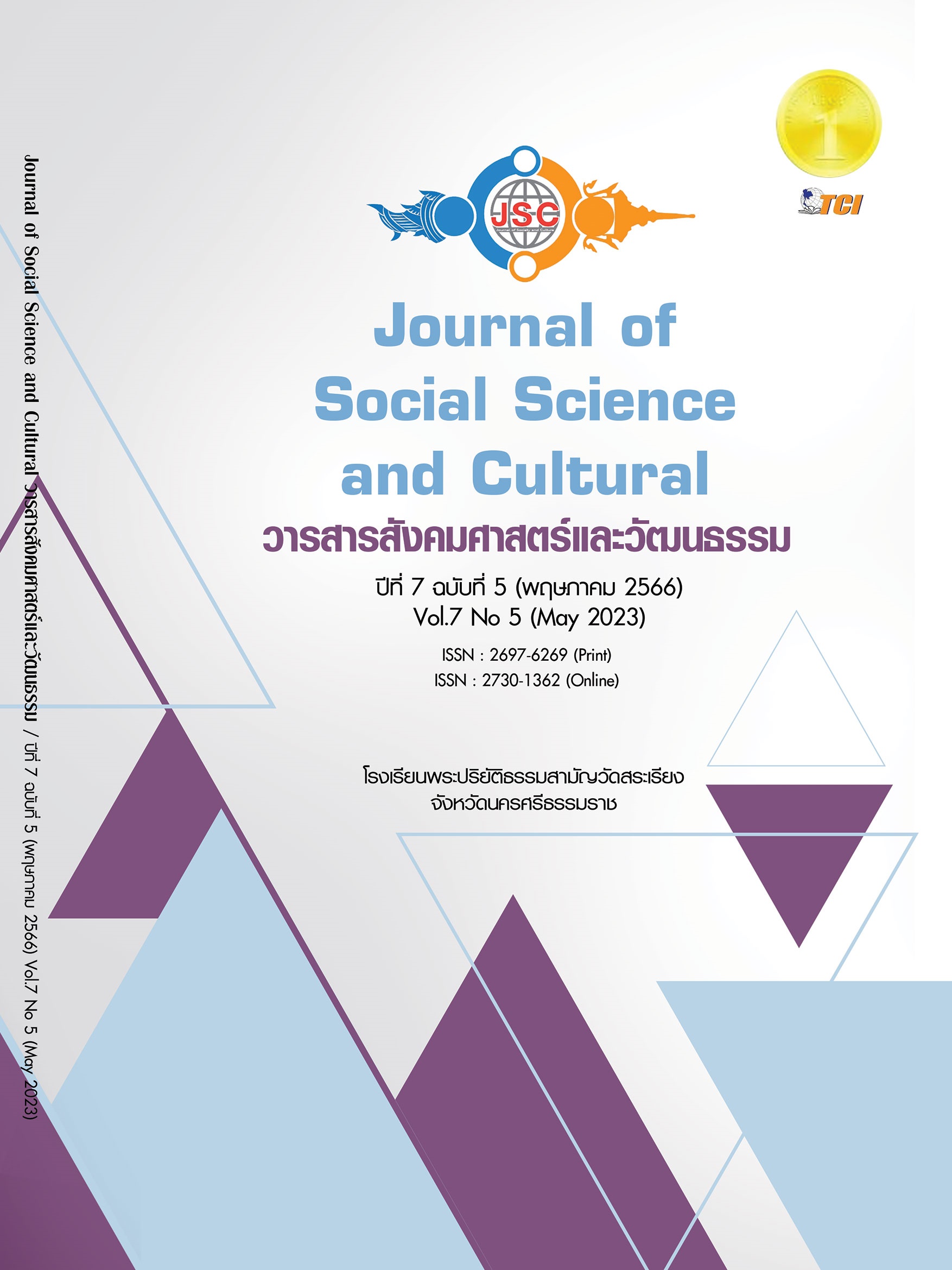DEVELOPMENT OF CHILD DEVELOPMENT PROMOTION AND SURVEILLANCE LITERACY MODEL FOR PARENTS OF EARLY CHILDHOOD WITH SUSPECTED LANGUAGE DEVELOPMENT DELAY, SUPHUNBURI PROVINCE.
Main Article Content
Abstract
Approximately 15-20 percent of early childhood worldwide had abnormal development that surveillance and effective measures need to be implemented. This research was aimed to develop a child development promotion and surveillance literacy model for parents of early childhood with suspected language development delay in Suphunburi province. This research employed the mixed method and Research & Development concept. The study was divided into 3 phases. Phase 1: Situation Analysis, the data was collected from the informants of 159 parents of Early Childhood with suspected language development delay along with the in – depth interview of 12 members of the Health Allianec Network. Phase 2: Model Development, the model was developed cooperatively by the Health Alliance Network members. Learning activities were developed with the aim to enhance the target parents’ child development promotion and surveillanc literacy. Phase 3: Model Trial and Evaluation: the model was tried with 30 parents each in the experimental and the comparison groups. The effectiveness of the model developed was done by comparing 6 child development literacy skill and child development promoting behaviors of the parents and language development of the children between the experimental and the comparison group, before and after the experimentation and at the follow period 6th week), by computing chi-square test, independent t-test, and Repeated Measures ANCOVA.
Article Details
References
กระทรวงสาธารณสุข. (2560). คู่มือเฝ้าระวังและส่งเสริมพัฒนาการเด็กปฐมวัย. กรุงเทพ: สำนักงานกิจการโรงพิมพ์องค์การสงเคราะห์ทหารผ่านศึก. หน้า 67 ในเล่ม DSPM.
กรมอนามัย กระทรวงสาธารณสุข. (2562). การประชุมเชิงปฏิบัติการแลกเปลี่ยนเรียนรู้ ถอดบทเรียนการ ดำเนินงานด้านพัฒนาการเด็ก 25-26 มีนาคม 2562) สืบค้นจาก https://nich.anamai.moph.go.th/th/news-anamai/175417
เขตสุขภาพที่ 5 กระทรวงสาธารณสุข. (2565). บทสรุปสำหรับผู้บริหาร ปีงบประมาณ 2565 รอบ1 พ.ศ. 2565. สืบค้นจาก http://apph.hpc.go.thupFile pdf
ทิพวรรณ หรรษคุณาชัย และคณะ. (2554). ตำราพัฒนาการและพฤติกรรมเด็กสำหรับเวชปฏิบัติทั่วไป. พิมพ์ครั้งที่ 1 กรุงเทพ: บ.บียอนด์ เอ็นเทอร์ไพรซ์จำกัด.
ธีรชัย บุญยะลีพรรณ. (2560). สถานการณ์พัฒนาการเด็กปฐมวัยไทยที่อายุ 9,18,30,42 เดือน ปี พ.ศ. 2560 ด้วย
คู่มือเฝ้าระวังและส่งเสริมพัฒนาการเด็กปฐมวัย (DSPM). ไม่ปรากฏสถานที่พิมพ์ หน้า 21)
บุญธรรม กิจปรีดาบริสุทธิ์, และพิศมัย เสรีขจรกิจเจริญ. (2560). ระเบียบวิธีการวิจัยสาธารณสุข: กรณีศึกษา
ความสัมพันธ์ระหว่างตัวแปร.
ประพา หมายสุข, ฒามรา สุมาลย์โรจน, และแก้วตา นพมณีจ ารัสเลิศ. (2562). การศึกษานำร่องโปรแกรมการส่งเสริมพัฒนาการเด็กล่าช้า โดยใช้แนวทาง DIR/Floortime. วารสารวชิรสารการพยาบาล ปีที่ 21 ฉบับที่ 2 กรกฎาคม – ธันวาคม 2562.
ประภาเพ็ญ สุวรรณ. (2562). จากทักษะความรอบรู้สุขภาพสู่พฤติกรรมสุขภาพและผลลัพธ์สุขภาพ. เอกสารการประชุมทางวิชาการและนำเสนองานวิจัยระดับชาติครั้งที่ 15 “การบูรณาการงานวิจัยขับเคลื่อนเศรษฐกิจไทยด้วยนวัตกรรม”. มหาวิทยาลัยเวสเทิร์น วัชรพล หน้า 116 - 28.
ยุวดี พงษ์สาระนันทกุล, และสุดาภรณ์ พยัคฆเรือง. (2559). รูปแบบการสร้างเสริมพัฒนาการด้านภาษาแก่เด็กอายุ 2 - 4 ปี โดยบิดามารดาหรือผู้ดูแล: กรณีศึกษาศูนย์พัฒนาเด็กเล็ก. J Nurs Sci. 2016;34(2): 34- 44
ศิริชัย กาญจนวาสี. (2559). วิธีวิทยาการวิจัย. พิมพ์ครั้งที่ 1. กรุงเทพฯ : ทรีบีการพิมพ์และตรายาง.
ศูนย์วิชาการแฮปปี้โฮม, พัฒนาการเด็ก. (2564). สืบค้นจาก www.happyhomeclinic.com/academy.htmlสถาบันสุขภาพจิตเด็กและวัยรุ่นราชนครินทร์ กรมสุขภาพจิต. (2559). วิธีสร้างความมั่นคงทางอารมณ์ให้ลูก. สืบค้นจาก https://www.thaiteentraining.com/index.php?module=news&action =view&id
=MzY0MDdjMzM=2
สุรีย์พันธุ์ วรพศธร. (2558). การวิจัยทางสุขศึกษา. พิมพ์ครั้งที่ 3. กรุงเทพมหานคร : โรงพิมพ์วิฑูรย์การปก.
Alberta Family Wellness Initiative. The Foundation of Lifelong Learning. Alberta, Canada. Available from www.albertafamily wellness.org
Ball, W. J & Bindler, C. R. (2008). Pediatric nursing : Caring for children. New Jersey :
Pearson Prentice Hall.


